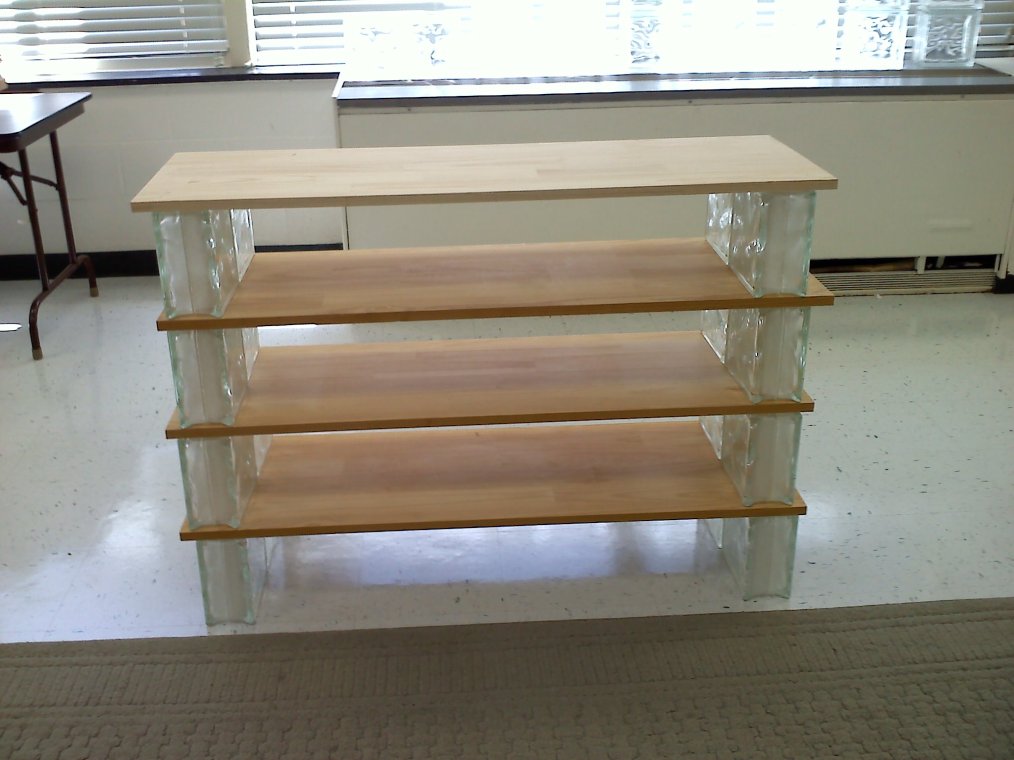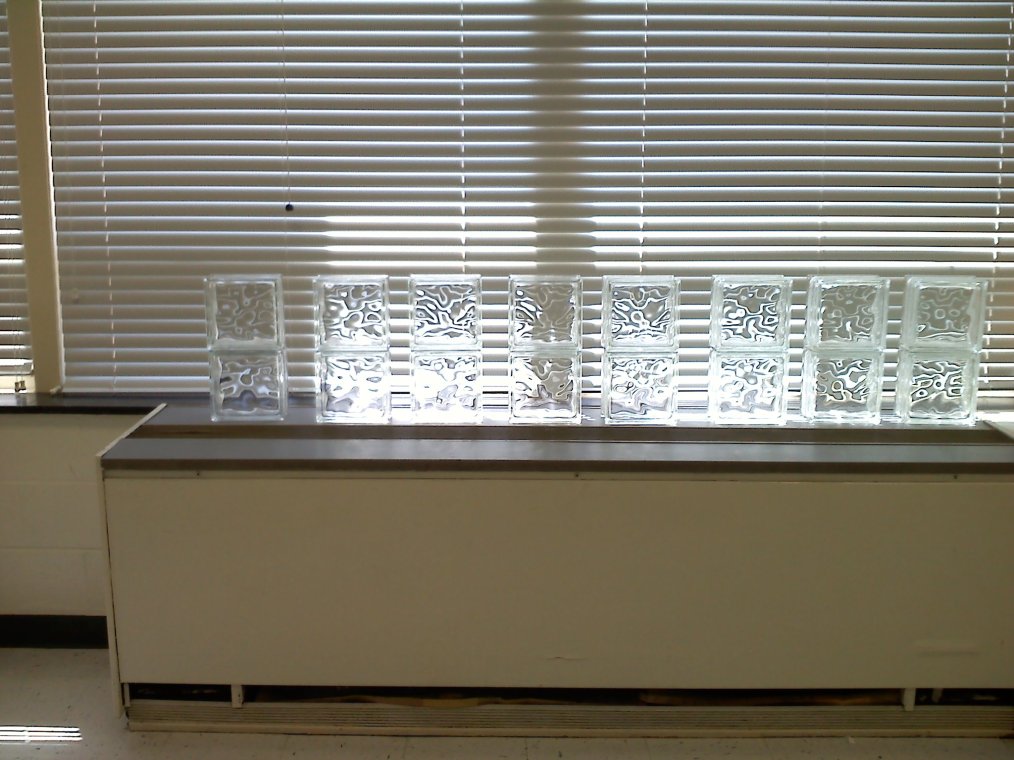The Focal Shelf
In Godly Play, the focal shelf is at the front center of the shelves that ring the room. Ideally, it’s opposite the door where the children come in, so that it catches their eyes as they enter. The storyteller sits in front of this shelf to present the lesson. (NOTE: Because I choose to orient my room so that we are facing a wall of windows looking out on God’s creation, my focal shelf does not exactly follow this placement. The children see it “sideways” as they enter, but it still creates a visual anchor.)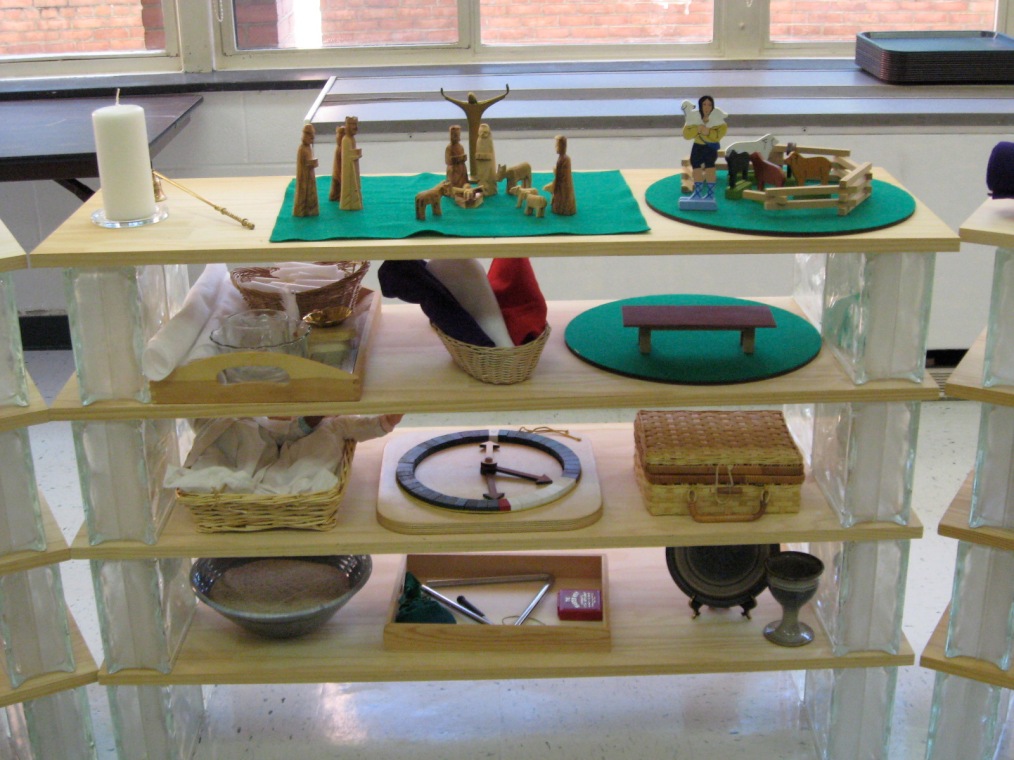 On the top shelf, the Holy Family is at the center, as the Incarnation is at the center of the Christian story. To the left and right are two of the central images Jesus gave us of himself: The Light and the Good Shepherd. From these two images flow materials for the two primary sacraments. Beneath the Light on the shelves are the materials for the Baptism lesson. Flowing from the Good Shepherd are the materials for the Holy Eucharist (Good Shepherd and World Communion; the People of the World rest in the covered basket).
On the top shelf, the Holy Family is at the center, as the Incarnation is at the center of the Christian story. To the left and right are two of the central images Jesus gave us of himself: The Light and the Good Shepherd. From these two images flow materials for the two primary sacraments. Beneath the Light on the shelves are the materials for the Baptism lesson. Flowing from the Good Shepherd are the materials for the Holy Eucharist (Good Shepherd and World Communion; the People of the World rest in the covered basket).
How to Build Glass-and-Board Shelves
How to Build Glass-Block-And-Board Shelves
I use these shelves in my Godly Play room in Alexandria, Virginia. I owe credit for the idea to my Godly Play trainer colleague, Kim McPherson.
MATERIALS NEEDED:
For each level of shelf, you need
- 4 glass blocks, 8x8x4” (about $8 each)
- 2 plastic vertical spacers to assemble blocks into 16x8x4 bricks.
- 1 finished board 48”x16”x3/4” (about $12 each)
- Silicone caulk (one tube is more than enough for the shelf above), about $5
- Caulking gun (about $5)


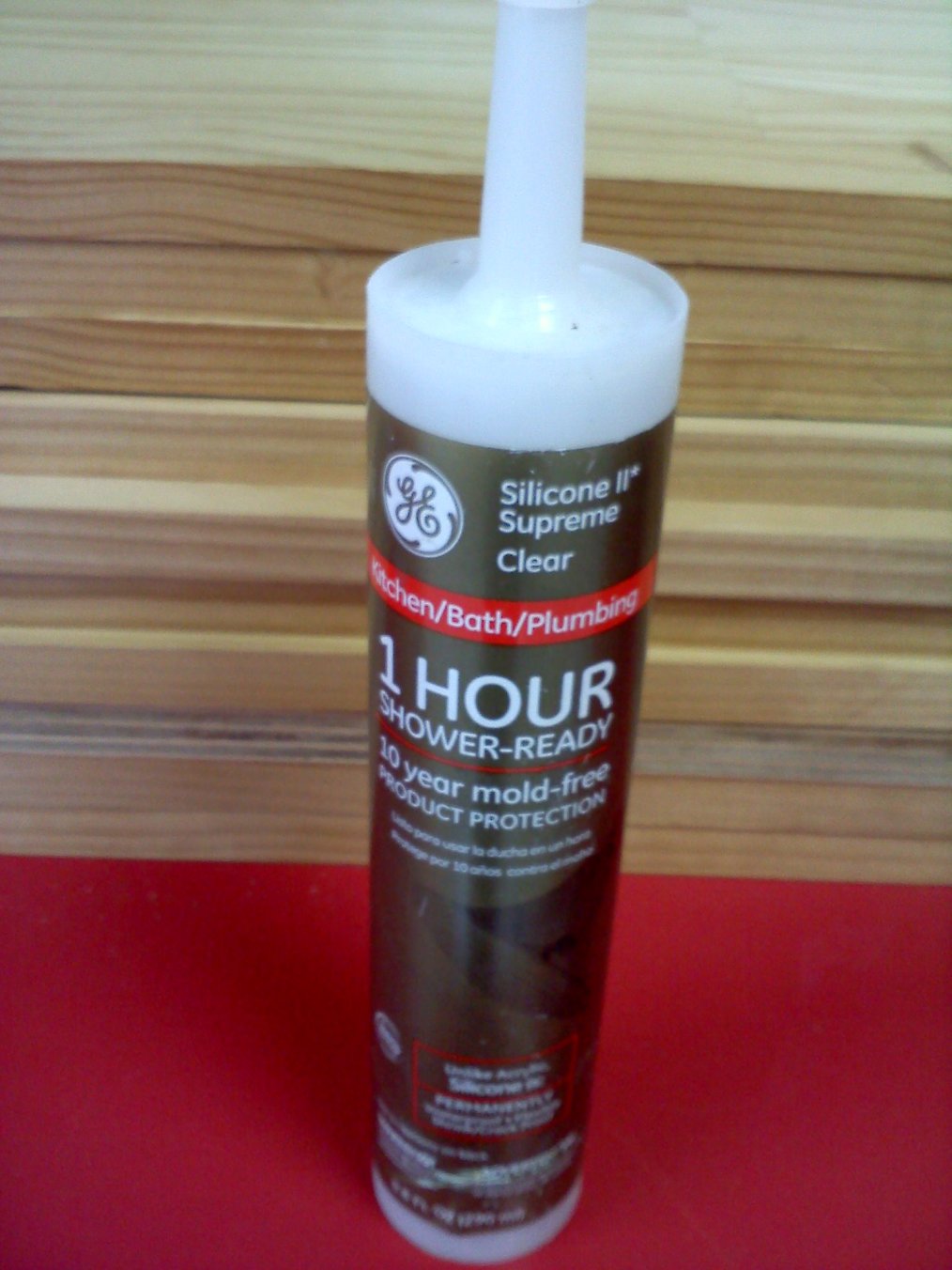

(For 4 shelves high, as pictured above, you need 16 blocks and 4 boards, at a cost of about $186. You may be able to reduce this cost.)
I have used these shelves for five years with children ages 4 to 11 and have had no accidents. I have 15 to 18 children at a time in the room. They learn to move carefully in the room and never to lean against the shelves.
To construct:
Begin at least 24 to 48 hours before you really need the shelves!
Prepare Caulk:
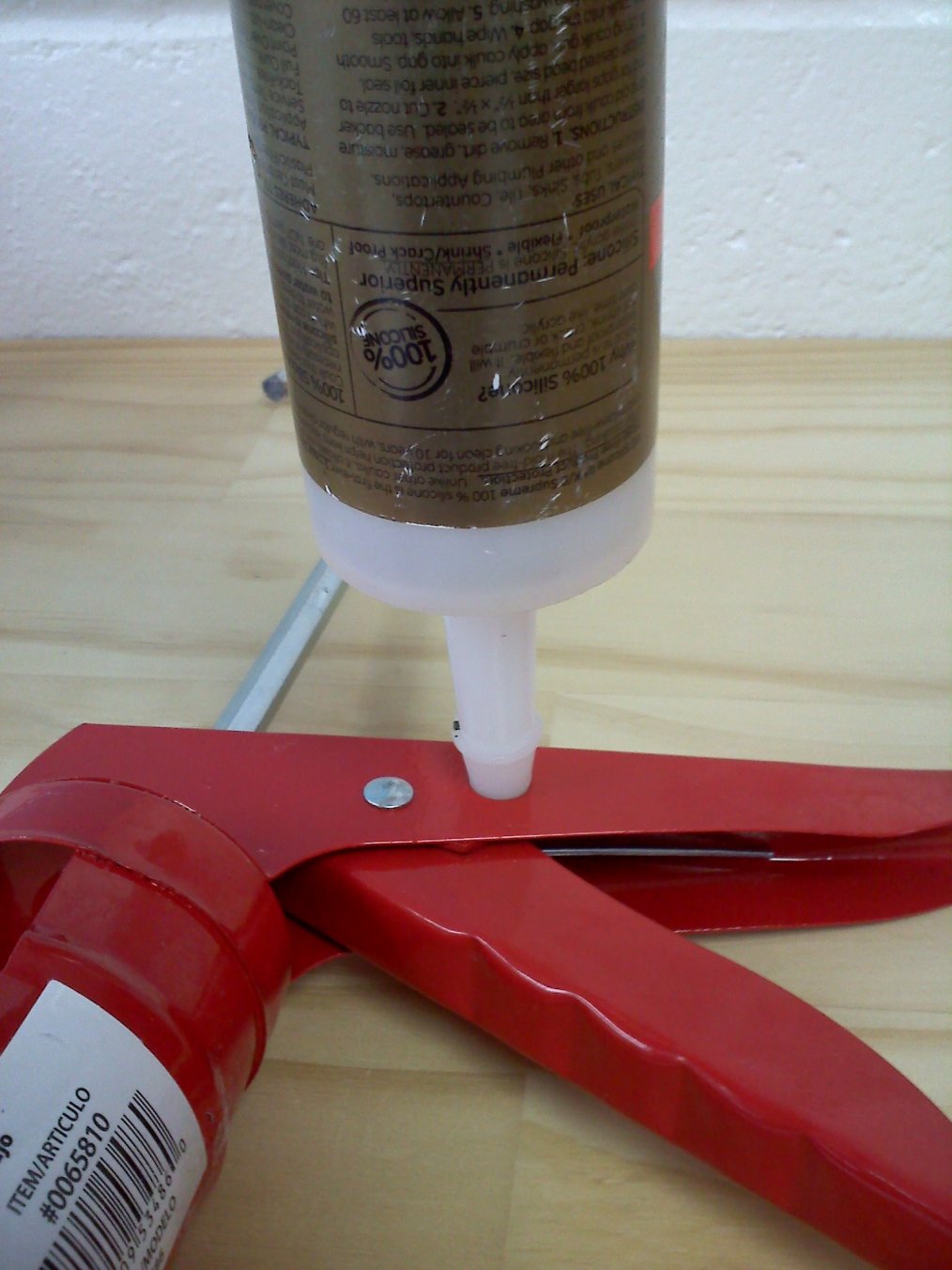 <<<<<<Snip end of caulking tube by inserting tip into the round hole below the squeeze handle.
<<<<<<Snip end of caulking tube by inserting tip into the round hole below the squeeze handle.
 Then poke thin rod (attached to the caulk gun) into the tip, to puncture the foil seal inside.
Then poke thin rod (attached to the caulk gun) into the tip, to puncture the foil seal inside.
Load caulk into caulk gun by pulling spring-loaded handle up and inserting tube..
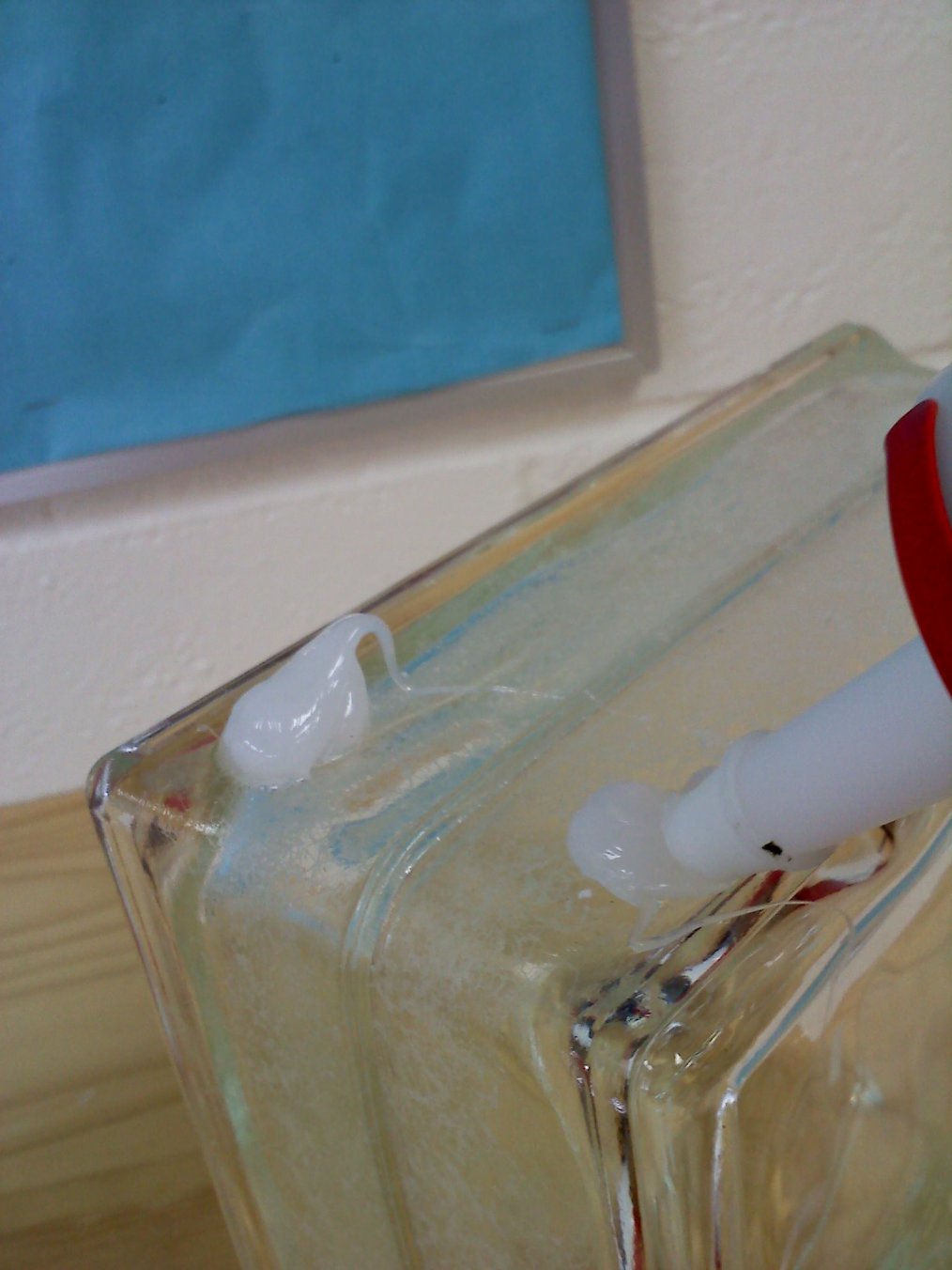 Squeeze the trigger to apply caulk to each corner of one block (about the size of a nickel).
Squeeze the trigger to apply caulk to each corner of one block (about the size of a nickel). 
Then apply one vertical spacer. These are 8” long, thin plastic, with a “ditch” in the middle that matches up with the ridge in the center of each block.
I found spacers in two styles from the same brand and I show the labels here because staff at Lowe’s and Home Depot did not recognize the term “vertical spacers.”
Press firmly and slide the spacer into place, if necessary, so that the center ridge matches up with the ditch in the center of the block.
 Apply caulk to the corners of the spacer.
Apply caulk to the corners of the spacer.
Then place second glass block on top of the block with the spacer. Slide and press into place. ALLOW TO DRY FOR AT LEAST ONE HOUR. (The caulk I used advertises that it dries “shower-ready” in one hour, but I always gave it more time than this.)
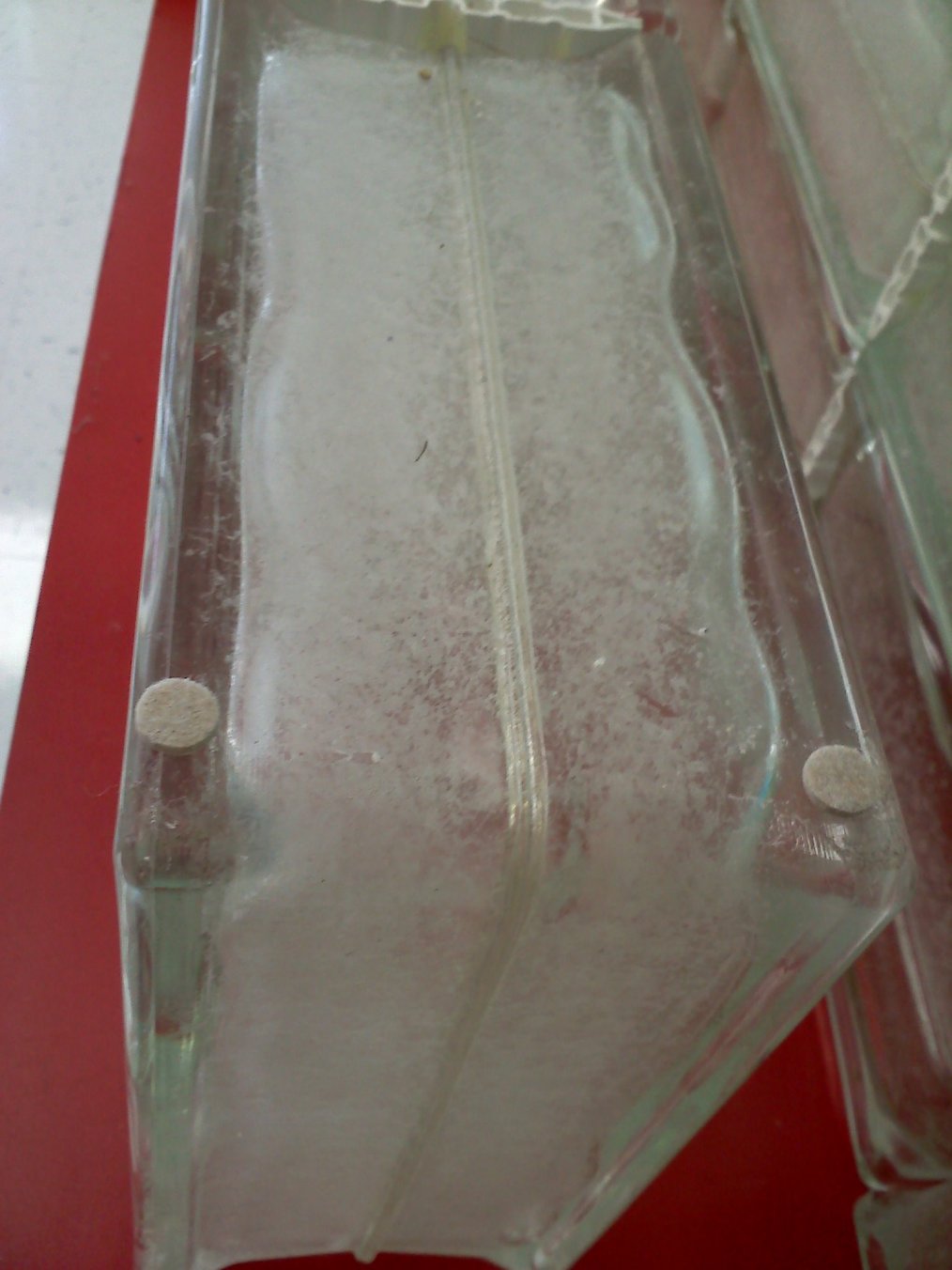
 For the bricks that will be on the bottom, I use felt pads to protect the tile floor.
For the bricks that will be on the bottom, I use felt pads to protect the tile floor.
 Almost there!! Now it’s a simple matter of placing the finished, dry bricks in the spaces where you want your shelves to be. Plan carefully, because once the shelves are in place, you can’t move them without disassembling the boards and bricks. (I know this because I once tried to shove the whole thing over a few inches. Yes, these blocks DO break when you do something stupid.)
Almost there!! Now it’s a simple matter of placing the finished, dry bricks in the spaces where you want your shelves to be. Plan carefully, because once the shelves are in place, you can’t move them without disassembling the boards and bricks. (I know this because I once tried to shove the whole thing over a few inches. Yes, these blocks DO break when you do something stupid.)
Place two bricks roughly 48” apart (you will want the boards to hang over a bit) and lay a board over it. It is not necessary to attach the boards to the bricks. This is the familiar cinderblock-and-board construction method of your college days, but isn’t this much prettier?
Hello world!
As a Godly Play practitioner and trainer, I want to spread the word about this wonderful, Montessori-based way of nurturing children in the Christian story and life. Godly Play, the creation of the Rev. Dr. Jerome Berryman and his wife Thea, is used in many denominations and in many countries, and has been translated into at least seven languages. This blog is not an official publication of the Godly Play Foundation (see http://www.godlyplayfoundation.org) but seeks to be a clearinghouse for ideas and experiences of teachers, trainers, and parents. Join the conversation!
